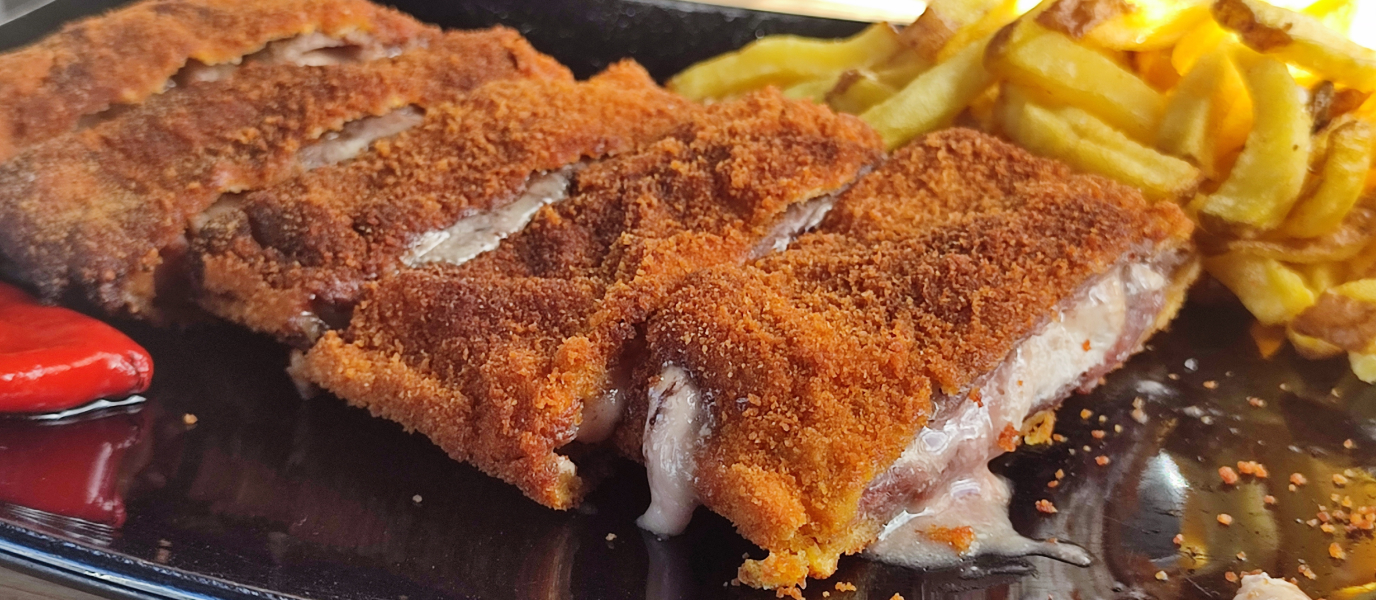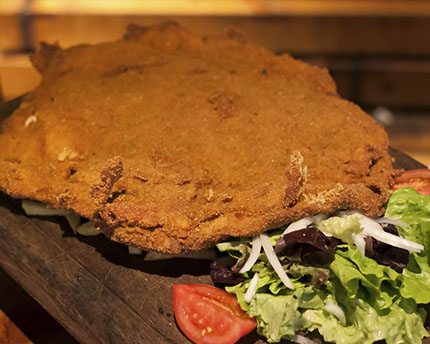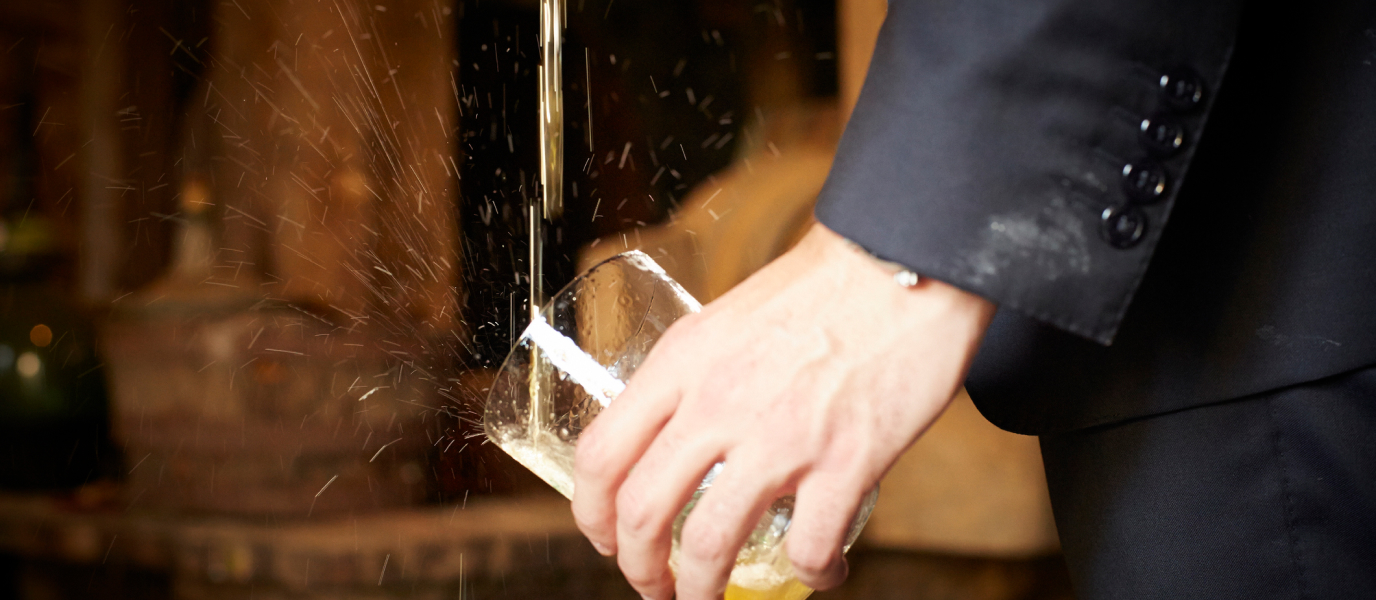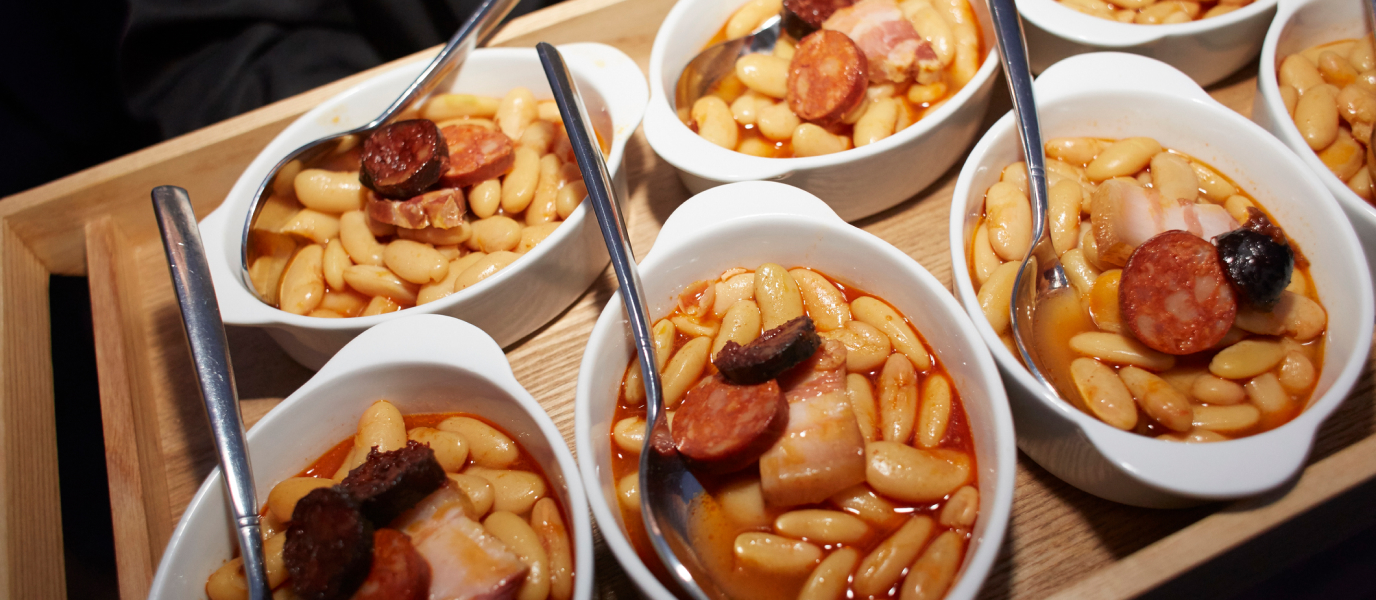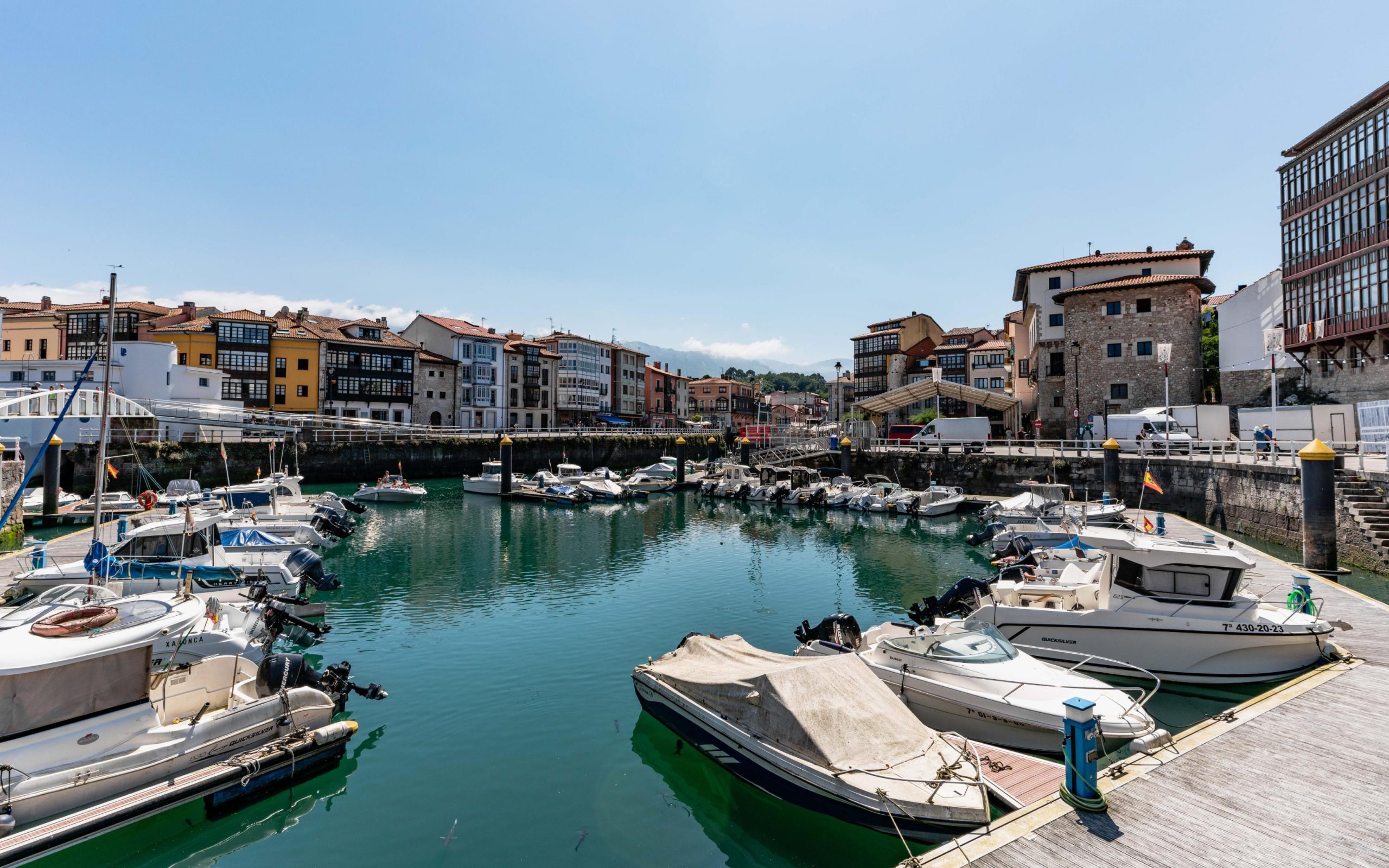The most popular typical Asturian dish is currently one or other variety of cachopo. With good quality beef as its selling point, cachopo has made it beyond Asturian borders to become a feature on menus throughout Spain.
Cachopo is certainly delicious, though Asturian cuisine has much more to offer. It is rich in stews including fabada and pote asturiano, and meat dishes made with pitu de caleya (a local breed of free-range, natural-fed chicken ), pork and goat kid.
The Asturian coast is also prized for fish and seafood such as hake, monkfish, cod, salmon, sea bass and clams. The latter are used to make a delicious white bean stew (these same beans are the main ingredient in fabada).
Lastly we come to what must be the two most famous and most widely exported Asturian products: cider and Cabrales cheese. Both are on the ingredients list of some of the best typical Asturian dishes.
Read on to discover some of the best examples of Asturian cuisine as we reveal the secrets to their success on dinner tables across the region.
Cachopo
The mantra of Asturian cuisine is ‘lo básico, si bueno, dos veces bueno’, which roughly translates as ‘something simple, done well, is twice as good’. Cachopo is the best example of such simple cuisine: it transforms a high-quality raw ingredient into something exquisite.
The raw ingredients in this case are two fillets of Asturian steak, the bigger the better. Each fillet is stuffed with cheese, cured meat, vegetables and/or whichever ingredients the diner prefers. This is a chance to get creative.
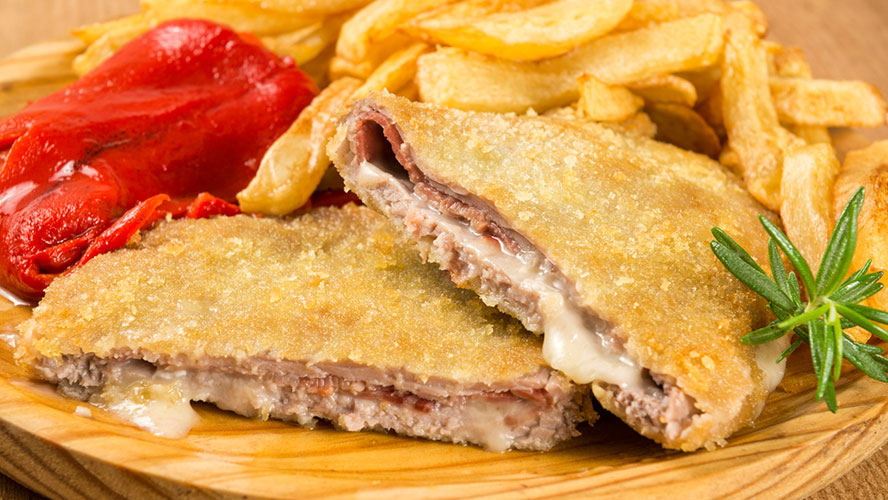
After combining the ingredients, the steaks are breaded with an egg and breadcrumb mixture and fried in plenty of oil until golden. A well-cooked cachopo should be crunchy with a robust breadcrumb crust, and the ingredients inside the steak should be cooked through.
Fabada asturiana
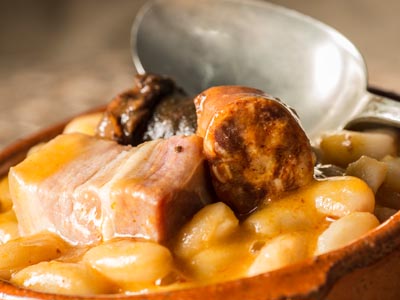
The most authentic Asturian dish is without a doubt fabada, so named because of the Asturian fabas (white beans) used to make it. Cultivated locally, these beans have a specific thickness and their skin is especially thin and delicate.
The beans are cooked over a low heat for at least two hours. While they’re cooking, into the pot goes chorizo, black pudding and streaky bacon (all smoked) – a mixture known in Asturian cuisine as the compango. The resulting dish is high in calories but very nutritious, satisfying and succulent; so much so that, like paella and other Spanish fare, fabada has gone from being a typical Asturian dish to one enjoyed across the country.
Pote asturiano
Asturian cuisine is also famous for a particular stew: pote asturiano. It is similar to a typical Spanish stew of pulses, vegetables and various meats. What makes pote asturiano different is that it’s made from traditional white beans rather than chickpeas.
The dish also relies on compango (like in fabada), collard greens and potatoes. A good pote asturiano should be cooked over a low heat for two to three hours to get the most flavour out of the ingredients.
Chorizo in cider
This typical Asturian appetizer is as easy to cook as it is delicious. Chunks of chorizo are cooked in good quality natural cider until they release their flavours and the alcohol has evaporated, leaving behind a tender meat and a sauce that is commonly mixed with boiled potatoes. The best way to enjoy it? Mop it up with some good bread.
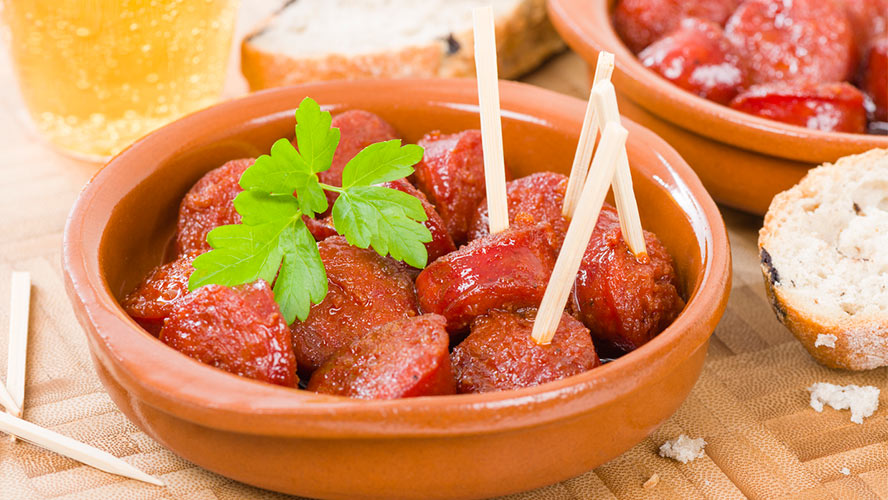
Frixuelos
Frixuelos (or frisuelos) are the signature Asturian dessert, second only to arroz con leche (a form of rice pudding) of course. Similar to crepes, they are made from a mixture of wheat flour, egg, milk, yeast and salt and cooked on a hot plate.
They can be filled with your chosen ingredients or enjoyed with a sprinkling of sugar, with honey or with any sweet sauce.
Each region has its own version of frixuelos. Some are soft while others are served crunchy – try the ones in western Asturias where they are fried and accompanied by an apple compote.
Other typical Asturian dishes
Asturias offers a range of typical dishes with one thing in common: local produce. These are some other delicious well-known dishes that you might want to try:
- Casadielles (or casadiellas): A small pasty made with wheat flour and stuffed with a mixture of walnuts, anise and sugar.
- Oricios: This seasonal dish (January to March) of raw sea urchin meat and roe is a real delicacy.
- Pitu de caleya: In contrast with typical poultry-farm chickens, these birds roam semi-free and feed on cereals, worms and other wild foods. The taste of the meat says it all. They are usually larger than conventional chickens and are delicious roasted or in stews.
- Bollos preñaos: These round wheat or corn breads stuffed with chorizo or bacon are typical party food.
- Cabrales cheese: This intense and spicy yet creamy cheese (you can spread it) is made from cow’s, sheep’s or goat’s milk and is cured for at least two months in natural caves.
- Other Asturian cheeses: The Principality of Asturias produces more than 40 varieties of cheese. Gamonéu, Afuega’l pitu and Casín all have protected designation of origin in additional to Cabrales. Those without such status are just as tasty though – try Los Beyos, Amiega and Porrúa.



































































